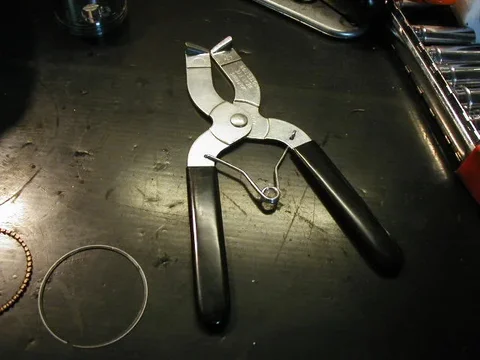PabloCruise
SILVER Star
or maybe us 3FE guys just don't take care of our engines as well.
Oooh! Fighting words!!!
Follow along with the video below to see how to install our site as a web app on your home screen.
Note: This feature may not be available in some browsers.
This site may earn a commission from merchant affiliate
links, including eBay, Amazon, Skimlinks, and others.
or maybe us 3FE guys just don't take care of our engines as well.
























You're just going to bed? Late night for you, I'm in my 9am class already
Good work on the motor. The coatings you are using have the potential to really catch on in the market of restoring old cruiser motors.
The strong points of a 2F are in the bottom end. Longer stroke, longer rods, taller, more stable pistons, IIRC a stronger crank. The bottom end of a 3FE is somewhat weaker. To shorten the deck the geometries were changed. On top of the shorter stroke it also has a much short rod and a shorter piston. The shorter rod means greater a greater maximum angle with respect to the centerline of the bore, and the shorter piston is less stable. Additionally, on a 3FE at bottom dead center the entire piston skirt has dropped out of the bore, IIRC, the piston stays completely within the bore at BDC on the 2F (I'll be able to check that in a couple days).
The strength of the 3FE is in the top end. The head has a tighter combustion chamber, the exhaust ports are bigger, the intake manifold and exhaust manifolds are both a more smooth flowing design than on the 2F, and of course you have a multiport fuel injection system, with all the engine management and fuel mixture benefits that come with it.
Compared to a 2F, you get better fuel management, and I would think an engine more suited to higher revs with the improved intake and exhaust. Compared to a 3FE, you get more low end grunt because of the extra stroke length (my 3FE doesn't really come alive till ~2500, but is strong in the 3000-4000 range) and you get a bottom end that while heavier, is supposedly stronger and better able to handle revs in the 4000-5000 range.
The 60 series trucks are well suited to fit a 2FE, since the 60 came with a 2F and was designed to accomodate the extra 2" of engine height. In a 60 or 62 with a 2FE, apparently the top of the intake manifold just rubs on the hood liner. With the 80 series trucks, I understand that underhood clearance is an obstacle for fitting a 2FE, you would either need a body lift, or a modified hood to get the clearance.
HTH
My biggest questions will be how the assembly goes between the 2 engines; things like water pump and belt driven accessories.
Example, you should have 2 different options for mounting PS pump, actually you have the option between two different PS pumps (3FE or 2F).
It will be neat to see this go together. Are you going to run A/C on this Doc?
My biggest questions will be how the assembly goes between the 2 engines; things like water pump and belt driven accessories.
Example, you should have 2 different options for mounting PS pump, actually you have the option between two different PS pumps (3FE or 2F).
It will be neat to see this go together. Are you going to run A/C on this Doc?
 I have all the 62 accessories, but none from a 60 at this time.
I have all the 62 accessories, but none from a 60 at this time.






 Maybe my camshaft will show up too.
Maybe my camshaft will show up too.

